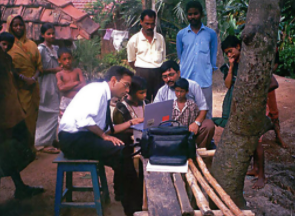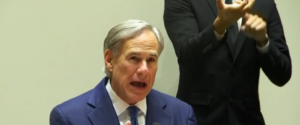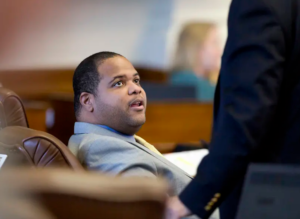Pawan Sinha: Bringing a new vision to autism

People with autism are famously said to have a razor-sharp attention to detail, but sometimes miss the big picture: to sketch a skyscraper, an artist with autism begins with the shadings of each tiny windowpane. A boy throws a tantrum if his bus takes a new route to school. When looking at a cooing woman’s face, a toddler doesn’t look into her warm, expressive eyes, but instead fixates on her moving mouth.
Over the past few years, Pawan Sinha has worked out a provocative theory that might help explain these anecdotes: people with autism have trouble with ‘temporal integration’, or drawing upon information learned in the past to anticipate the future.
The basic idea is that meaningful social interactions — which are difficult for people with autism — hinge on precisely synchronized events. For example, to understand spoken language, you must quickly and seamlessly integrate sounds to form meaningful words: myoo plus zik becomes music, not muse, use or sick. Similarly, imagine how difficult it would be to have a party conversation if you couldn’t monitor, in real time, your companion’s facial expressions or gestures in response to your words.
In between setting world records, carrying out vision experiments on his infant son, and launching a campaign to build a large eye hospital in New Delhi, Sinha has led an effort to test about 40 children with autism on a variety of visual and auditory experiments. Preliminary data from his team at the Massachusetts Institute of Technology (MIT) show that these children do have deficits in temporal integration.
“We know that motion plays a crucial boot-strapping role in vision, and motion processing has been shown to be deficient in autism,” Sinha says. “Our working hypothesis is that autism might, at least in part, be the manifestation of difficulties in processing dynamic information.”
If this timing problem occurs in early development, he says, it could cascade into the myriad of difficulties seen in the disorder, including difficulty in recognizing faces, hypersensitivity to sounds and lights and the insistence on a daily routine.
Sinha’s theory is provocative because scientists have already identified the brain circuits that are responsible for integrating information over time, says Tony Movshon, director of the Center for Neural Science at New York University.
“Autism needs a mediating hypothesis that takes the behavioral descriptions in one hand, and the molecular-circuitry descriptions in the other, and brings them together,” he says. “Pawan’s ideas are efforts to bridge that gap.”
These ideas have stirred up much intellectual debate in the autism field because they assert that the disorder’s fundamental deficit is perceptual, rather than social. But Sinha didn’t set out to study autism. Like many of his projects, this one took a circuitous route — beginning with a blind man in India.
Objects in motion:
In July of 2004, Sinha was sitting with a young man in a sticky, nondescript hotel room in New Delhi.
The man was poor, and born without lenses in his eyes, making him all but blind for 29 years. Two weeks earlier, he had received a pair of glasses, which allowed him to discriminate light levels and motion for the first time.
By carrying out some simple experiments, Sinha hoped that the man, known as S.K., would help answer the question that’s motivated most of his scientific career: how does the brain learn to see?
S.K. watched black outlines of a square, triangle and circle pop up in different combinations on a computer monitor. “How many things are these?” Sinha asked. When a circle and a square were separated, S.K. could easily count them. But when they overlapped, he saw three objects, and pointed to the three regions contained by the intersecting lines. He had no sense of which segments made up the circle, and which ones the square — until the shapes began to move.
“The world seems to be broken up into too many pieces and he can’t quite put it together. But motion brings about a very significant change,” Sinha says as he watches, for the umpteenth time, a grainy video of the scene.
The soft-spoken scientist proudly plays this clip whenever he gives talks about this work, called Project Prakash, named for the Sanskrit word for light. Like Sinha himself, the project’s goals are equal parts humanitarian and scientific: to restore sight in Indian children with curable blindness, and to then observe how they learn to navigate the visual world.
In November, Sinha published the results of his experiments with S.K. and two other Prakash participants1. For all of them, the key to visual integration — perceiving objects as coherent wholes, rather than a mish-mash of spaces and lines — is motion.
He suspects that motion is also a key concept for understanding autism.
Five years ago, Sinha didn’t know much about autism beyond the adage that people with the disorder have trouble ‘seeing the forest for the trees’. After delving into the scientific literature, he discovered that not only do people with autism show abnormalities in visual integration — as shown, for example, by their ability to quickly find hidden pictures in a complex scene — but that they have deficits in processing motion2. “The connection [with Project Prakash] seemed to be an obvious one,” he says.
Path to Prakash:
Growing up in the capital city of New Delhi, Sinha was, for the most part, shielded from the extreme poverty of India’s rural villages. He stayed in the city for college, attending the prestigious Indian Institute of Technology, and ranked first in the department of computer science when he graduated in 1988.
The following year, he moved to the U.S. to begin his graduate studies. He studied how to build supercomputers at the University of California, Berkeley, for a year before switching to studying artificial intelligence at MIT. In January 1998, he became an assistant professor of psychology at the University of Wisconsin-Madison. Just six months went by, he says with a chuckle, before MIT recruited him back to Cambridge, where he is now an associate professor of brain and cognitive sciences.
It wasn’t until a visit to his hometown in 2002, at age 35, that Sinha came face to face with India’s blindness problem.
Sitting in the waiting room of a private medical clinic, he noticed a poor couple whose young boy had cataracts — a curable disease that causes clouding of the lenses. Later, when Sinha asked the doctor whether the clinic would treat the child, the doctor replied that they didn’t do free surgeries. “That got me thinking. If on this short trip to India I’m seeing one child, there are probably many more,” Sinha recalls.
He soon learned that about 1 in 100 Indians is blind. Nearly 60 percent of these cases are either preventable or treatable, but fewer than 20 percent are treated.
Over the following two years, Sinha, sometimes accompanied by his father, made several more trips to clinics across the country, to both estimate the magnitude of the problem and identify eye surgeons who might be willing to collaborate on a charitable treatment effort.
Once Prakash was off the ground, Sinha’s warm nature made it easy to establish trust among Indian families, notes Yuri Ostrovsky, a graduate student who has accompanied Sinha to India nine times.
“When we first encounter the [families] they’re shy and extremely deferential, but within just a few minutes, he’ll have the elders of the village inviting us over for tea,” Ostrovsky says.
So far, two major scientific findings have come out of Project Prakash: the fact that vision can be restored, even after decades of deprivation3, and the idea that the brain relies on motion cues to learn how to interpret the world.
Much to Sinha’s delight, the effort has inadvertently spawned several other research tracks. For instance, his team is designing computer systems that can recognize objects from raw video footage4. Prakash is also answering the ‘Molyneux Problem,’ a 300-year-old philosophical puzzle that asks whether a blind man who knows a globe and a cube by touch would, if magically cured, be able to recognize these objects by sight5. The answer, at least from Prakash participants, is no.
Prakash also led Sinha to autism.
Pong and pings:
His first research on people with the disorder, in 2003, focused on their ability to integrate a visual scene. The autism literature is fuzzy on the subject, with some studies showing clear deficits and others showing none.
His first subject was Neeraj Barua, a 25-year-old with autism whose mother, Merry, founded Action for Autism, the largest autism school and advocacy organization in India. Sinha had visited the school several times and given a few lectures about his research to the staff.
“Once I met him, I thought he was fabulous. And everybody at the center enjoyed him,” recalls Merry Barua. “When he said he was interested in doing studies, I said I would love to collaborate.”
Sinha tested whether Neeraj and others at the center could identify simple computerized pictures, such as a bell pepper or a potato. The tricky part was that the researchers had slightly scrambled the pixels of each image, making it blurry. In order to correctly identify an image, a participant would have to take in the structure as a whole, rather than focusing on any single detail. Unlike healthy children, participants with autism consistently fail the task.
Based on his observations with Prakash participants, Sinha suspected that motion might also be driving the visual integration problems in autism. To test this, he used Pong, one of the most popular arcade games of all time.
Pong simulates table tennis, with a ball bouncing from one side of the screen to the other. The player must quickly position a short vertical bar (the paddle) to return the ball to the opponent’s side.
In both New Delhi and Cambridge, Sinha tracked children’s eye movements while playing Pong. Healthy participants tend to look where the ball bounces on the opponent’s side, and then immediately to the spot on their side where they would expect the ball to go.
Children with autism, in contrast, never take their eyes off the ball. They follow it until just before it meets the vertical plane of their paddle, and then abruptly move the paddle to meet the ball. In other words, they can’t use what they know about how balls bounce to anticipate where to move the paddle.
To extend this beyond the visual system, Sinha is also testing how well children with autism anticipate sound patterns. In one experiment, children listen to a steady metronome and are asked to press a button at the same time as each beep. Healthy children can match the rhythm within a few beeps, but children with autism always lag a moment behind.
At first, Sinha says, he was worried about how the autism field would respond to his proposed link between the motion lessons learned from Project Prakash, and autism.
“I’ve presented these data with some trepidation. I haven’t really spent decades and decades in autism, so I worried that some of these ideas might seem simplistic to researchers,” he says. “But the response has uniformly been very positive.”
The creative prince:
So far, Prakash clinics have screened more than 20,000 blind children and treated more than 400. They’ve also managed to convince the Indian Supreme Court to mandate that every child be screened by an ophthalmologist before being admitted to a school for the blind.
“Pawan is a prince among men,” says Richard Held, an emeritus professor at MIT who studies infant vision, and has traveled with Sinha to India. “He is remarkably generous and nurturing.” For instance, Held says, when Sinha’s son, Darius, was born, Sinha decided to become a vegetarian. “He just felt that life was so precious and so valuable that he couldn’t be part of destroying it,” Held says.
Sinha is known for his creativity as much as his kindness. He has a sketching easel set up in his office, and portraits of his team hang all over their offices and break room.
One of Sinha’s inventions even made it into the Guinness Book of World Records. While they were in graduate school together, Sinha and his wife, Pamela Lipson-Sinha, used nanoengineering to make a 5-by-5 millimeter replica of the New Testament of the King James Bible. In 2003, it officially became the world’s smallest printed-book reproduction.
After Good Morning America and The New York Times covered the story, many people wrote Sinha to see if they could buy copies of the book. He seized on the potential business opportunity, making a new version for the Indian market: the world’s smallest Bhagavad Gita, one of the oldest and most sacred texts of Hinduism.
The Gitas are now sold as pendants for $300, with proceeds going to Project Prakash. As of March, about 4,500 have sold. Sinha hopes to raise $15 million to build a Prakash Center in New Delhi that will provide medical care and basic education and continue the scientific experiments.
“The state of children with disabilities in India is just so bad that we want to do something more than just a scientific project for them,” he says. “And now the little Gita is contributing a bit towards that goal.”
This article was originally published on Pawan Sinha: Bringing a new vision to autism







